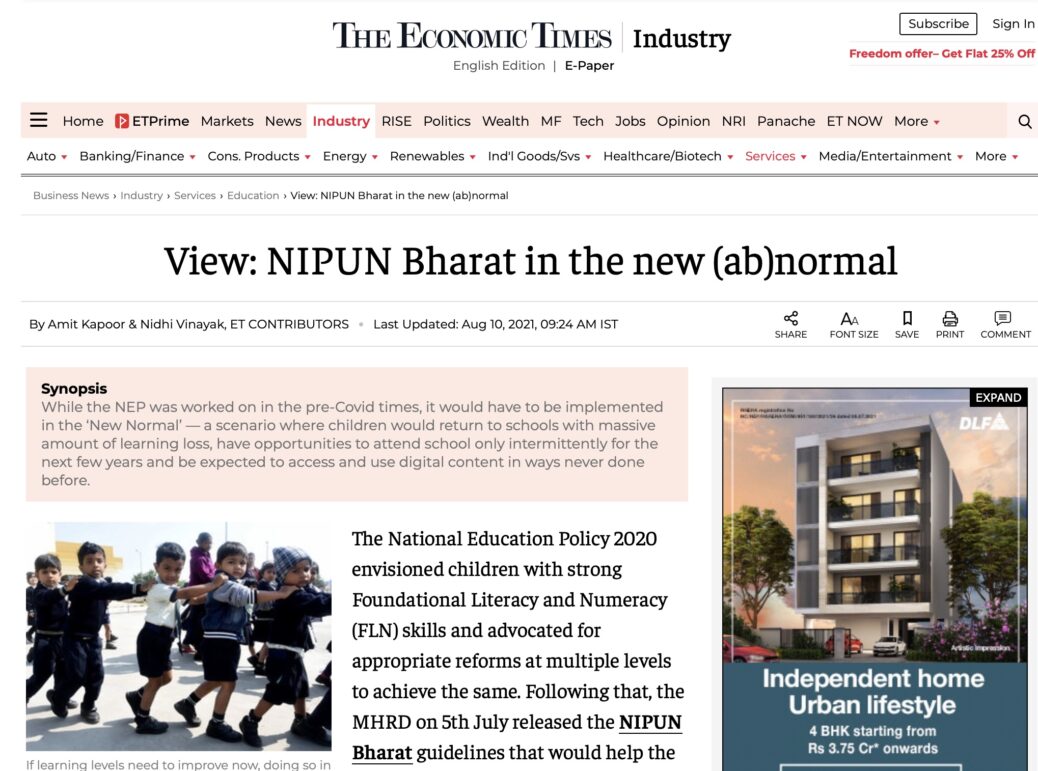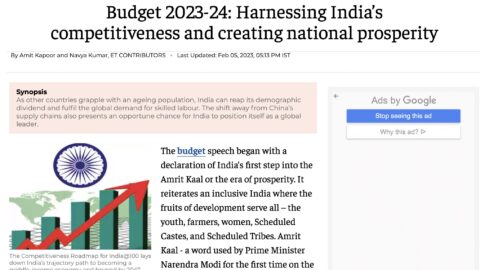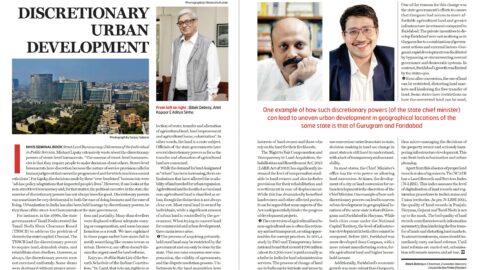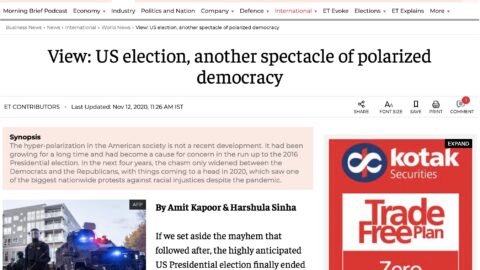NIPUN Bharat in the New (Ab)Normal
The National Education Policy 2020 envisioned children with strong Foundational Literacy and Numeracy (FLN) skills and advocated for appropriate reforms at multiple levels to achieve the same. Following that, the MHRD on 5th July released the NIPUN Bharat guidelines that would help the states achieve this vision in a ‘mission mode’. These guidelines look at Foundational Literacy as a 4-year continuum, with one year of Balvatika (pre-school) along with Grade 1-3. It details out with focus the competency-based pedagogy, teacher training and capacity building of the mid-level govt officials, essential goals and outcomes, and involvement of community / parents in the learning process.
While the NEP was worked on in the pre-Covid times, it would have to be implemented in the ‘New Normal’. One may define new normal as a scenario where children would return to schools with massive amount of learning loss, have opportunities to attend school only intermittently for the next few years and be expected to access and use digital content in ways never done before. If we as a nation would like to achieve the goals as envisaged in the NEP, we would need to re-examine the NIPUN guidelines in this New Normal.
As highlighted by ASER studies over the years, we as a system have always struggled with low learning levels of children. This problem has further been accentuated in the wake of school closures for the past year and a half. Most of the children studying in government schools are facing massive learning loss. Recent study shows that not only children have not acquired curricular gains of the grade they are in, a huge majority has ‘lost’ or forgotten a key skill they had acquired in school (Loss of Learning During the Pandemic, Azim Premji University 2021). If schools for primary grade children continue to remain closed this academic year as well, we would have an entire generation of say grade 3 students in 2022 promoted to the said grade without having acquired even the basic grade 1 skills. Popular literature uses the term ‘Matthew Effect’ to highlight that once children fall behind, they tend to keep falling behind. If this is true, then chances of these children covering up their learning losses would be very low, unless intensive efforts are made to streamline learning.
The NIPUN Bharat document talks of the importance and application of balanced approach pedagogy into the classrooms. This is a much-needed positive step. For a long time, experts and pedagogists have been oscillating between the two extremes of the reading wars, phonics approach and the whole language approach. Today fortunately research in neuroscience has established beyond doubt the redundancy of these ‘approaches’. Reading requires parallel processing in the brain wherein the reader must focus on both reading skills and meaning making simultaneously. One cannot function without the other, and comprehension is the larger umbrella under which all the other skills are subsumed. Hence, if a child has to develop into an independent reader, she must be taught the nuances of script and the ability to go beyond the text and think about what she is reading while she is reading it. This can be best achieved by implementing the balanced approach, as talked about in the document.
However, there are yet some key areas that need to be relooked at. The first is how the Learning outcomes have been defined along with the existing complexities and lack of alignment therein. It may be more prudent to redefine the learning outcomes in simple language and ensure that the same are communicated to all the stakeholders, including parents. Additionally, the fluency target of 45-60 correct words per minute (cwpm) by end of grade 2 seems to have been defined as a benchmark for all scripts and languages with little backing of research and practical experience. While the document acknowledges the relevance of and promotes including child’s home language into the classroom; the learning outcomes and fluency benchmarks so defined ignores the complexity that this reality brings in. Additionally, the pandemic with its massive learning loss has made achieving these even more difficult. Hence, there emerges an urgent need to re-calibrate the existing learning outcomes from medium term to long term, based on the current learning gaps and simultaneously reassess the fluency lakshya basis a strong foundation of research and understanding.
Secondly, the curriculum would need a complete restructuring in the current scenario. While doing so, it would be extremely critical to be cautious against the so called ‘fast-paced remediation packages’. Nothing would be more harmful than expecting a child entering grade 3 in 2022 to be able to cover up both the lost grades and at the same time achieve grade level competencies within one academic year.
Thirdly, this would require complete revision of the textbooks and other resources used in classroom teaching. There are two reasons for doing so. One, the NIPUN Bharat guideline talks of balanced approach, while textbooks traditionally have been prepared using either one of the ‘extreme’ approaches. Second, one cannot expect to achieve the new learning outcomes and implement redesigned curriculum using old tools. Textbooks would have to be reviewed from both these angles to give maximum advantage not just to the child, but also to the teachers using these resources in the classroom.
Fourthly, while focus on digital resources is increasing today and is also highly recommended in the NIPUN document, one must be cautious and ensure that a right balance between the digital and non-digital resources is arrived at. If the goals of FLN are to be achieved, children would need to be explicitly taught how to negotiate age-appropriate text in both the formats and engage in deep reading. This becomes even more critical when one understands the additional challenges that digital learning brings with it, including the loss of ‘deep reading’ abilities that equips one to pause, reflect, infer and go beyond the text.
Finally, addressing the New Normal and mitigating the learning loss will require well-structured capacity building interventions at all levels, empowering parents to be equal partners in their child’s learning and strengthening the school-community linkages.
Focus on achieving FLN in a ‘mission mode’ couldn’t have come at a better time than this. If learning levels need to improve now, doing so in a mission mode with focus on all stakeholders simultaneously is the best bet. However, in the face of the New Normal, we might want to re-examine our priorities, re-evaluate our vision and our goals and plan appropriately The release of NIPUN Bharat guidelines is an opportunity for the state governments to reform their Foundational Literacy and Numeracy policies and implementation to not only address the ‘Learning Crisis’ but truly build a ‘NIPUN Bharat’.
The article was published with Economic Times on August 10, 2021.
























